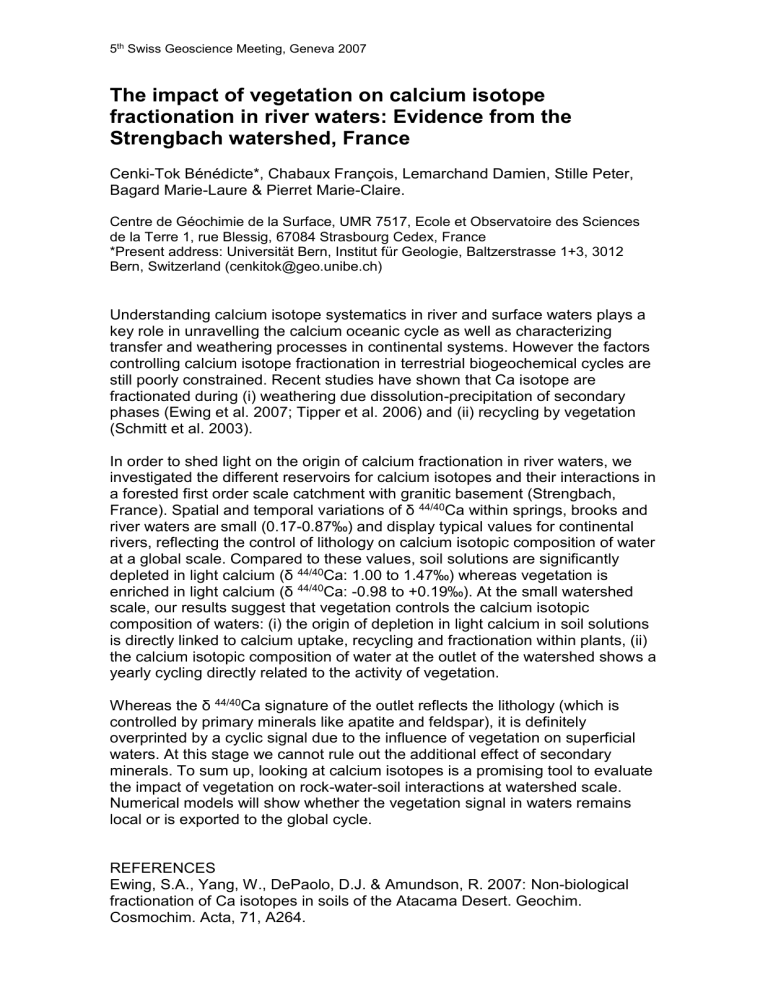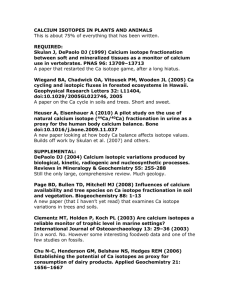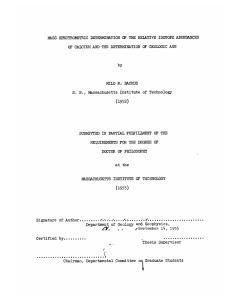Cenki-Tok_Benedicte_Talk

5 th Swiss Geoscience Meeting, Geneva 2007
The impact of vegetation on calcium isotope fractionation in river waters: Evidence from the
Strengbach watershed, France
CenkiTok Bénédicte*, Chabaux François, Lemarchand Damien, Stille Peter,
Bagard Marie-Laure & Pierret Marie-Claire.
Centre de Géochimie de la Surface, UMR 7517, Ecole et Observatoire des Sciences de la Terre 1, rue Blessig, 67084 Strasbourg Cedex, France
*Present address: Universität Bern, Institut für Geologie, Baltzerstrasse 1+3, 3012
Bern, Switzerland (cenkitok@geo.unibe.ch)
Understanding calcium isotope systematics in river and surface waters plays a key role in unravelling the calcium oceanic cycle as well as characterizing transfer and weathering processes in continental systems. However the factors controlling calcium isotope fractionation in terrestrial biogeochemical cycles are still poorly constrained. Recent studies have shown that Ca isotope are fractionated during (i) weathering due dissolution-precipitation of secondary phases (Ewing et al. 2007; Tipper et al. 2006) and (ii) recycling by vegetation
(Schmitt et al. 2003).
In order to shed light on the origin of calcium fractionation in river waters, we investigated the different reservoirs for calcium isotopes and their interactions in a forested first order scale catchment with granitic basement (Strengbach,
France). Spatial and temporal v ariations of δ 44/40 Ca within springs, brooks and river waters are small (0.17-
0.87‰) and display typical values for continental rivers, reflecting the control of lithology on calcium isotopic composition of water at a global scale. Compared to these values, soil solutions are significantly depleted in light calcium (δ 44/40 Ca: 1.00 to 1.47‰) whereas vegetation is enriched in light calcium (δ 44/40 Ca: 0.98 to +0.19‰). At the small watershed scale, our results suggest that vegetation controls the calcium isotopic composition of waters: (i) the origin of depletion in light calcium in soil solutions is directly linked to calcium uptake, recycling and fractionation within plants, (ii) the calcium isotopic composition of water at the outlet of the watershed shows a yearly cycling directly related to the activity of vegetation.
Whereas the δ 44/40 Ca signature of the outlet reflects the lithology (which is controlled by primary minerals like apatite and feldspar), it is definitely overprinted by a cyclic signal due to the influence of vegetation on superficial waters. At this stage we cannot rule out the additional effect of secondary minerals. To sum up, looking at calcium isotopes is a promising tool to evaluate the impact of vegetation on rock-water-soil interactions at watershed scale.
Numerical models will show whether the vegetation signal in waters remains local or is exported to the global cycle.
REFERENCES
Ewing, S.A., Yang, W., DePaolo, D.J. & Amundson, R. 2007: Non-biological fractionation of Ca isotopes in soils of the Atacama Desert. Geochim.
Cosmochim. Acta, 71, A264.
5 th Swiss Geoscience Meeting, Geneva 2007
Schmitt, A.D., Chabaux, F. & Stille, P. 2003: The calcium riverine and hydrothermal isotopic fluxes and the oceanic calcium mass balance. Earth.
Plan. Sci. Lett., 213, 503-518.
Tipper, E.T., Galy, A. & Bickle, M.J. 2006: Riverine evidence for a fractionated reservoir of Ca and Mg on the continents: Implications for the oceanic Ca cycle.
Earth. Plan. Sci. Lett., 247, 267-279.
297, 269-281.








